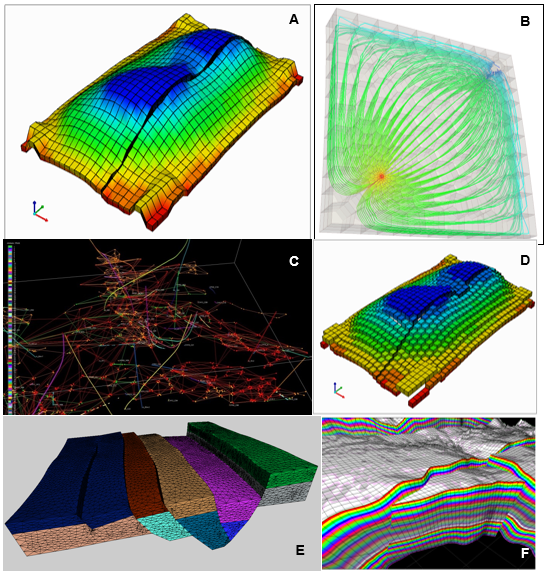11.2 Example of Grids that can be Transferred with RESQML
| Topic Version | 1 | Published | 09/11/2015 | |
| For Standard | RESQML v2.0.1 | |||
Figure 6.6-1 shows the variety of grids that may be represented in RESQML, labeled A-F. Of these different grids, only image A, an IJK grid, could be transferred in RESQML v1. Grid B is an example of a 2.5D perpendicular bisector (PEBI) grid, which is represented as a RESQML unstructured column-layer grid. As with an IJK grid, there is a column-layer structure, but unlike an IJK grid, the columns are not structured.
The remaining grids are all examples with very different means of representing the grid geometry.
- In Grid C, each unstructured grid “cell” has been replaced by a pore volume and a point, and each inter-cell transmissibility has been replaced by a link between cells. This is an example of the “grid-free” representation used by the newest reservoir simulation applications.
- Grid D is an example of an IJK grid, but the grid cell geometry is specified by cell dimensions (DX, DY, DZ) instead of by the corner nodes of each cell. This is an example of one of the oldest reservoir simulation grid formats, which can now be transferred in RESQML.
- Grid E is an example of a polyhedral unstructured grid. The geometry of each cell is described as a polyhedra in space.
- Grid F is an example of “XYOT” truncated grid, which has an underlying IJK grid description, but includes split and truncated cells at fault block boundaries. The resulting cells may have more than six faces and more than eight corner nodes.
